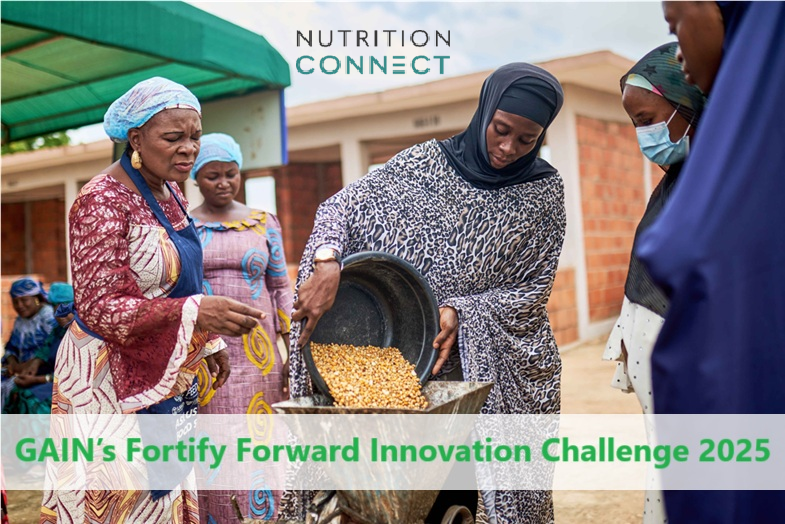The Large-Scale Industrial Food Fortification (LSFF), Biofortification, and Nutrition Connect teams at GAIN International invites applications from entrepreneurs, researchers, innovators, and organizations to join the Fortify Forward Innovation Challenge 2024-25 competition as part of its larger effort to improve the nutritional quality of foods throughout the food value chain in East and West Africa.
Hidden hunger, characterized by micronutrient deficiencies, affects over 2 billion individuals globally, including a significant portion of the African population. This form of malnutrition impairs immune function, hinders cognitive and physical development, and increases mortality rates, particularly among children and pregnant women. Addressing this issue is crucial for public health and socio-economic development in Africa.
Understanding Micronutrient Deficiencies
Micronutrient deficiencies occur when individuals lack essential vitamins and minerals necessary for optimal health. In Africa, deficiencies in vitamin A, iron, iodine, and zinc are prevalent, leading to conditions such as:
- Vitamin A Deficiency: Causes night blindness and increases susceptibility to infections.
- Iron Deficiency: Leads to anemia, reducing work capacity and cognitive function.
- Iodine Deficiency: Results in goiter and developmental delays.
- Zinc Deficiency: Impairs immune response and growth.
Strategies to Combat Micronutrient Deficiencies
Large-Scale Food Fortification (LSFF)
LSFF involves adding essential micronutrients to commonly consumed foods during processing. This strategy enhances the nutritional quality of the food supply with minimal risk. Key aspects include:
- Staple Food Fortification: Enriching foods like wheat flour, maize meal, and rice with vitamins and minerals. This approach has been effective in reducing deficiencies in various populations.
- Salt Iodization: Universally recognized as a cost-effective intervention to prevent iodine deficiency disorders.
Biofortification
Biofortification enhances the nutrient content of crops through conventional breeding or genetic modification. This method aims to increase the micronutrient density in staple crops, ensuring that populations receive essential nutrients through their regular diets. Examples include:
- Vitamin A-Enriched Sweet Potatoes: Developed to combat vitamin A deficiency.
- Iron-Rich Beans: Bred to address iron deficiency anemia.
Innovative Challenges and Competitions
To stimulate novel solutions in fortification, initiatives like the Fortify Forward Innovation Challenge have been launched. This competition seeks to discover scalable and sustainable innovations in LSFF and biofortification, focusing on:
- Profitable and Sustainable Business Models: Encouraging the development of viable business strategies that support food fortification, including efficient machine design and supply chain optimization.
- Segregation and Aggregation Solutions: Addressing the challenges of distinguishing biofortified crops from conventional ones and effectively aggregating them for market distribution
Fortify Forward Innovation Challenge 2024-25
The Fortify Forward Innovation Challenge 2024-25 is a regional competition that aims to combat hidden hunger and malnutrition in Africa by promoting innovative solutions for large-scale industrial food fortification and biofortification.
Objective
The challenge seeks to identify and support scalable and sustainable innovations that can strengthen food systems and improve public health in East and West Africa.
Eligibility Criteria
To participate, applicants must be companies or individuals based in East or West African countries, including Tanzania, Kenya, Uganda, Rwanda, Ethiopia, Mozambique, Benin, and Nigeria. Applicants can be entrepreneurs, startups, researchers, academics, small and medium-sized enterprises (SMEs), and food producers and suppliers.
Competition Categories
The challenge has several categories, including:
- Profitable and Sustainable Business Models for Fortification: Innovations that develop viable business models supporting food fortification.
- Innovative Solutions for Food Fortification and Biofortification: Innovations that improve the nutritional content of commonly consumed foods.
Selection Criteria
Proposals will be evaluated based on criteria which include innovation, feasibility, scalability, impact on nutrition, sustainability, and alignment with the competition objectives.
Prizes
Winning proposals will receive $5,000 in financial support, as well as mentorship, technical assistance, and media exposure to help them scale their innovations
Case Studies and Success Stories
Bangladesh: Fortified Rice in Social Safety Nets
Since 2013, Bangladesh has expanded fortified rice distribution from 30,000 to over 13 million people through social assistance programs. This success was achieved by collaborating with the government and rice millers to build local production capacity and strengthen the supply chain for fortified rice.
Peru: Fortified Rice in School Feeding Programs
In 2019, Peru introduced fortified rice into its national school feeding program, reaching 2.4 million children in the first year. During the COVID-19 pandemic, the government provided take-home rations that included fortified rice, mitigating the risk of malnutrition among children and their families
How to Apply
Interested entrepreneurs can join by filling the application form for the Fortify Forward Innovation Challenge 2025 online. Please fill it to the best of your knowledge.
Start your application here: https://nutritionconnect.org/en/FortifyForward
For any queries contact us at [email protected]


2 Comments
I have started my application but I can’t access my form anymore. The page is no longer opening. It’s showing error. Kindly assist with resolving the error. Thank you.
This is the link to the application form, its working fine, check your network or use another browser
https://docs.google.com/forms/d/e/1FAIpQLSfDKh_I8MZC7B85E52Opy10dcvLAJfQ862j9a52LH6aF0iVzQ/viewform